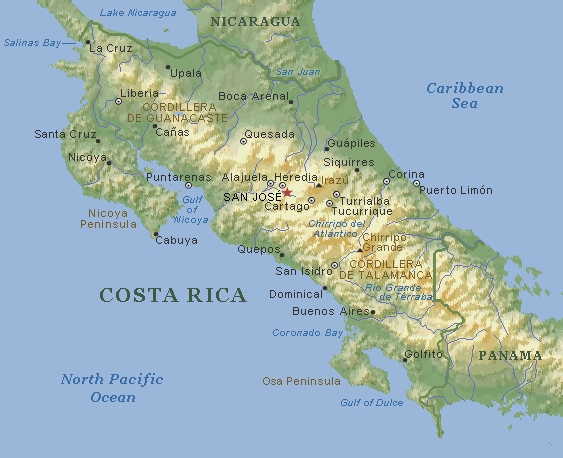Lesson 1 - Where is Costa Rica and what is the physical environment like?
Learning objectives:
- to be able to locate Costa Rica
- to be able to describe at least 3 different physical environments in Costa Rica
- to be able to explain why these environments attract tourists
Costa Rica is a small country in Central America. There is a coastline on both the east (Caribbean Sea) and the west (Pacific Ocean) side of the country. You can travel from east to west coast in about 3 hours by car or 45 minutes by plane.
To the north, Costa Rica is bordered by Nicaragua. To the south, it is bordered by Panama. It is a tropical country, lying in the Northern Hemisphere between the equator and the Tropic of Cancer.



A series of volcanic mountain chains run from the Nicaraguan border in the north-west to the Panamanian border in the south-east, splitting the country in two. In the centre of these ranges is a high-altitude plain. There are coastal lowlands on either side.
The Caribbean coast is 131 miles long and has many mangroves, swamps and sandy beaches. The Pacific coast is much more rugged and rocky and is 630 miles long with many gulfs and peninsulas.
Costa Rica's environment is very diverse - this region of the world is considered one of the most biodiverse. The country's biodiversity attracts nature lovers from all over the world. The primary attraction for many visitors is the 850 recorded bird species, which include the quetzal, indigo-capped hummingbirds, macaws and toucans. Costa Rica's tropical forests have over 1400 tree species and provide a variety of habitats for the country's fauna including four types of monkey, sloths, armadillos, jaguars and tapirs. There are also a number of dazzling butterflies. National parks cover almost 12% of the country, and forest reserves and Indian reservations boost the protected land area to 27%.
Comments (0)
You don't have permission to comment on this page.